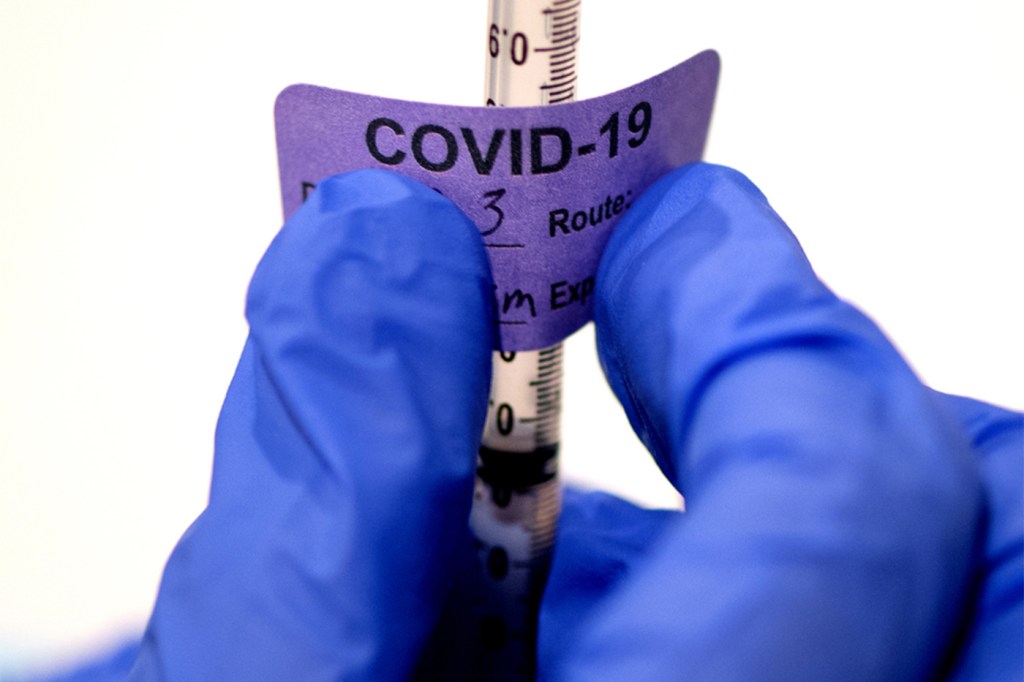What is the winter forecast for COVID-19? And should we expect a ‘tripledemic’ of COVID, flu and RSV?

The COVID-19 winter forecast is for relatively mild illness thanks to vaccination and natural immunity, health experts at Northeastern University say.
“We know that the majority of Americans have been vaccinated against COVID or had a natural infection or both. So even if you get a COVID infection, you should have a milder reaction,” says Mansoor Amiji, university distinguished professor of pharmaceutical sciences and chemical engineering.
“As we go toward the holiday season and we gather to celebrate different events and as the temperature starts to drop, it’s inevitable we’re going to see a spike in respiratory infections such as flu and COVID,” he says.

“But the good news in both cases, especially for those who have been fully vaccinated, is that even if they get the infection, it will be fairly mild,” Amiji says. “In terms of virulence, we’ve seen a decline.”
“I think we’re in a new place with COVID in the sense that we have effective vaccines and a clear vaccination schedule. We have the right tools,” says Neil Maniar, a professor of public health practice at Northeastern.
“This is the sort of new normal that we will be in for the foreseeable future. We’re in a very different place with COVID compared to where we were even a year ago and definitely compared to two years ago,” Maniar says.
Meet the new variant, HV.1
Hospitalization rates for COVID-19 are low in all states except West Virginia and Hawaii, where the Centers for Disease Control and Prevention says they are medium.
A variant called HV.1 is currently the most prevalent subvariant of COVID in the U.S., accounting for 29% of cases and surpassing Eris (EG.5), the dominant strain this summer.
Health experts say that while HV.1 is highly contagious, it appears to be relatively mild. Symptoms include cough, fatigue, runny nose and congestion.
The effectiveness of the new COVID-19 vaccine against HV.1 is unknown at this time, but health experts expect it to provide coverage since HV.1 is part of the Omicron family whose subvariant, XBB.1.5 was circulating this spring. The updated vaccine targets XBB.1.5, nicknamed Kraken.
Will there be a ‘tripledemic’ this year?
Last year, COVID-19 infections ran into an early flu season and an unusual surge of respiratory infections in young children to create what some experts called a “tripledemic.”
A common respiratory infection that most children get by the age of 2, RSV is particularly dangerous for premature infants, babies younger than 6 months and children with health issues according to the CDC, which says RSV hospitalizes about 58,000 children under 5 years old every year in the U.S.
This year, for the first time ever, immunization against RSV is available for both older adults and babies entering their first RSV season.
People most susceptible to RSV “can get vaccinated against RSV,” Amiji says. “We have vaccines and they are very effective.”
For infants, immunization consists of a monoclonal antibody and for older adults, two vaccines are available. The CDC recommends vaccination for adults age 60 and up.
There is also a vaccine available for pregnant women that the CDC recommends be given during weeks 32 to 36 of pregnancy from September through January.
The importance of vaccines
“The hope is that with the availability of these vaccines, we will not see as severe an outbreak, or tripledemic, as we did last year,” Maniar says.
“The main message I have for all, especially as we gather in the holiday season, is to make sure you are protected and get yourself vaccinated. The pharmacies are stocked with” vaccines for COVID-19 and the flu, Amiji says.
Getting vaccinated reduces the risk of severe illness and death from the viruses, Maniar says. “Individuals who get vaccinated may still get COVID, but they ideally will get a much milder form or even an asymptomatic form.”
It usually takes one to two weeks for vaccines to become fully effective, Maniar and Amiji say. Even if it’s too close to Thanksgiving for full protection, they say there is no time like the present for getting vaccinated.
When it comes to dealing with the seasonal surge in COVID-19, flu and RSV, “We have the most robust toolkit available to fight all three of these than we’ve ever had,” Maniar says.
Tests, masks and hand washing
Other things people can do to protect themselves, their loved ones and the public from the burden of disease are to test for COVID in the case of a known exposure or symptoms, to consider wearing a mask indoors and to wash their hands often.
“Testing is still an important part of our toolkit,” Maniar says, pointing out the government has made another round of free testing available.
It’s also a good idea to test for COVID before seeing elderly or immunocompromised relatives during the holidays, Amiji says, “just to make sure you are not carrying anything with you.”
When it comes to concerns about avoiding airborne illnesses such as COVID-19, RSV and flu, Maniar says “it’s perfectly OK to wear a mask inside.”
“Masks are becoming more rare. That doesn’t mean that they’re any less effective, though. They are still effective,” he says.
Maniar recommended that people get a well-fitted KN95 mask and change it out frequently. “I try to use a fresh one every day,” he says.
Proper handwashing is also key to avoiding illnesses, not only flu and other airborne respiratory illnesses but also gastrointestinal infections, Maniar says.
Keeping an eye on new variants
It’s possible that a more dangerous variant could emerge in the coming weeks and months, Amiji and Maniar say.
“We’re always in that mode of waiting and watching and being aware of what is happening with the virus throughout the world,” Amiji says. “It seems like the COVID-19 infection is getting to a point where it’s (transforming) from a pandemic to endemic (illness).”
There’s cautious optimism right now, Amiji says, but it’s possible that a more dangerous variant could emerge in the coming weeks and months.
“We’re always in that mode of waiting and watching and being aware of what is happening with the virus throughout the world,” he says.
“You never know what’s going to happen in terms of variants that are on the horizon,” Maniar says. “We just need to be cautious and pay attention to what’s going on.”
Cynthia McCormick Hibbert is a Northeastern Global News reporter. Email her at c.hibbert@northeastern.edu or contact her on X/Twitter @HibbertCynthia.







